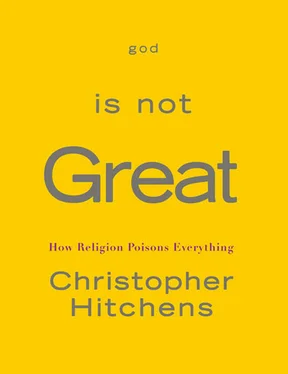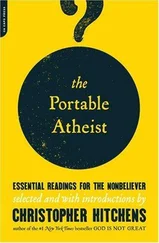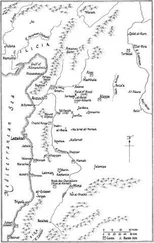Another way of putting this is to say that, as I write, a version of the Inquisition is about to lay hands on a nuclear weapon. Under the stultified rule of religion, the great and inventive and sophisticated civilization of Persia has been steadily losing its pulse. Its writers and artists and intellectuals are mainly in exile or stifled by censorship; its women are chattel and sexual prey; its young people are mostly half-educated and without employment. After a quarter century of theocracy, Iran still exports the very things it exported when the theocrats took over—pistachio nuts and rugs. Modernity and technology have passed it by, save for the one achievement of nuclearization.
This puts the confrontation between faith and civilization on a whole new footing. Until relatively recently, those who adopted the clerical path had to pay a heavy price for it. Their societies would decay, their economies would contract, their best minds would go to waste or take themselves elsewhere, and they would consistently be outdone by societies that had learned to tame and sequester the religious impulse. A country like Afghanistan would simply rot. Bad enough as this was, it became worse on September 11, 2001, when from Afghanistan the holy order was given to annex two famous achievements of modernism—the high-rise building and the jet aircraft—and use them for immolation and human sacrifice. The succeeding stage, very plainly announced in hysterical sermons, was to be the moment when apocalyptic nihilists coincided with Armageddon weaponry. Faith-based fanatics could not design anything as useful or beautiful as a skyscraper or a passenger aircraft. But, continuing their long history of plagiarism, they could borrow and steal these things and use them as a negation.
This book has been about the oldest argument in human history, but almost every week that I was engaged in writing it, I was forced to break off and take part in the argument as it was actually continuing. These arguments tended to take ugly forms: I was not so often leaving my desk to go and debate with some skillful old Jesuit at Georgetown, but rather hurrying out to show solidarity at the embassy of Denmark, a small democratic country in northern Europe whose other embassies were going up in smoke because of the appearance of a few caricatures in a newspaper in Copenhagen. This last confrontation was an especially depressing one. Islamic mobs were violating diplomatic immunity and issuing death threats against civilians, yet the response from His Holiness the Pope and the archbishop of Canterbury was to condemn—the cartoons! In my own profession, there was a rush to see who could capitulate the fastest, by reporting on the disputed images without actually showing them. And this at a time when the mass media has become almost exclusively picture-driven. Euphemistic noises were made about the need to show “respect,” but I know quite a number of the editors concerned and can say for a certainty that the chief motive for “restraint” was simple fear. In other words, a handful of religious bullies and bigmouths could, so to speak, outvote the tradition of free expression in its Western heartland. And in the year 2006, at that! To the ignoble motive of fear one must add the morally lazy practice of relativism: no group of nonreligious people threatening and practicing violence would have been granted such an easy victory, or had their excuses—not that they offered any of their own—made for them.
Then again, on another day, one might open the newspaper to read that the largest study of prayer ever undertaken had discovered yet again that there was no correlation of any kind between “intercessory” prayer and the recovery of patients. (Well, perhaps some correlation: patients who knew that prayers were being said for them had more postoperative complications than those who did not, though I would not argue that this proved anything.) Elsewhere, a group of dedicated and patient scientists had located, in a remote part of the Canadian Arctic, several skeletons of a large fish that, 375 million years ago, exhibited the precursor features of digits, proto-wrists, elbows, and shoulders. The Tiktaalik, named at the suggestion of the local Nunavut people, joins the Archaeopteryx, a transitional form between dinosaurs and birds, as one of the long-sought so-called missing links that are helping us to enlighten ourselves about our true nature. Meanwhile, the hoarse proponents of “intelligent design” would be laying siege to yet another school board, demanding that tripe be taught to children. In my mind, these contrasting events began to take on the characteristics of a race: a tiny step forward by scholarship and reason; a huge menacing lurch forward by the forces of barbarism—the people who know they are right and who wish to instate, as Robert Lowell once phrased it in another context, “a reign of piety and iron.”
Religion even boasts a special branch of itself, devoted to the study of the end. It calls itself “eschatology,” and broods incessantly on the passing away of all earthly things. This death cult refuses to abate, even though we have every reason to think that “earthly things” are all that we have, or are ever going to have. Yet in our hands and within our view is a whole universe of discovery and clarification, which is a pleasure to study in itself, gives the average person access to insights that not even Darwin or Einstein possessed, and offers the promise of near-miraculous advances in healing, in energy, and in peaceful exchange between different cultures. Yet millions of people in all societies still prefer the myths of the cave and the tribe and the blood sacrifice. The late Stephen Jay Gould generously wrote that science and religion belong to “non-overlapping magisteria .” They most certainly do not overlap, but this does not mean that they are not antagonistic.
Religion has run out of justifications. Thanks to the telescope and the microscope, it no longer offers an explanation of anything important. Where once it used to be able, by its total command of a worldview, to prevent the emergence of rivals, it can now only impede and retard—or try to turn back—the measurable advances that we have made. Sometimes, true, it will artfully concede them. But this is to offer itself the choice between irrelevance and obstruction, impotence or outright reaction, and, given this choice, it is programmed to select the worse of the two. Meanwhile, confronted with undreamed-of vistas inside our own evolving cortex, in the farthest reaches of the known universe, and in the proteins and acids which constitute our nature, religion offers either annihilation in the name of god, or else the false promise that if we take a knife to our foreskins, or pray in the right direction, or ingest pieces of wafer, we shall be “saved.” It is as if someone, offered a delicious and fragrant out-of-season fruit, matured in a painstakingly and lovingly designed hothouse, should throw away the flesh and the pulp and gnaw moodily on the pit.
Above all, we are in need of a renewed Enlightenment, which will base itself on the proposition that the proper study of mankind is man, and woman. This Enlightenment will not need to depend, like its predecessors, on the heroic breakthroughs of a few gifted and exceptionally courageous people. It is within the compass of the average person. The study of literature and poetry, both for its own sake and for the eternal ethical questions with which it deals, can now easily depose the scrutiny of sacred texts that have been found to be corrupt and confected. The pursuit of unfettered scientific inquiry, and the availability of new findings to masses of people by easy electronic means, will revolutionize our concepts of research and development. Very importantly, the divorce between the sexual life and fear, and the sexual life and disease, and the sexual life and tyranny, can now at last be attempted, on the sole condition that we banish all religions from the discourse. And all this and more is, for the first time in our history, within the reach if not the grasp of everyone.
Читать дальше












